To increase the life span of the plant, remove flowers when the first appear with sharp gardening shears.
Water
must be kept damp
Light
bright indirect light
Humidity
moderate to high
Plant Toxicity
not toxic.
Across the EU
60€ in Germany | 100€ Europe*
Founded 2017 in Berlin
Across the EU
60€ in Germany | 100€ Europe*
Founded 2017 in Berlin
Across the EU
60€ in Germany | 100€ Europe*
Founded 2017 in Berlin
August 23, 2024
To increase the life span of the plant, remove flowers when the first appear with sharp gardening shears.
must be kept damp
bright indirect light
moderate to high
not toxic.
zPlant Care Tips part 2 – by Plant Circle
Hypoestes Care Tips
Hypoestes thrive in bright, indirect light. While they can tolerate lower light, this may result in slower growth and leggy stems. Avoid direct sunlight, which can scorch their delicate leaves.
Read more
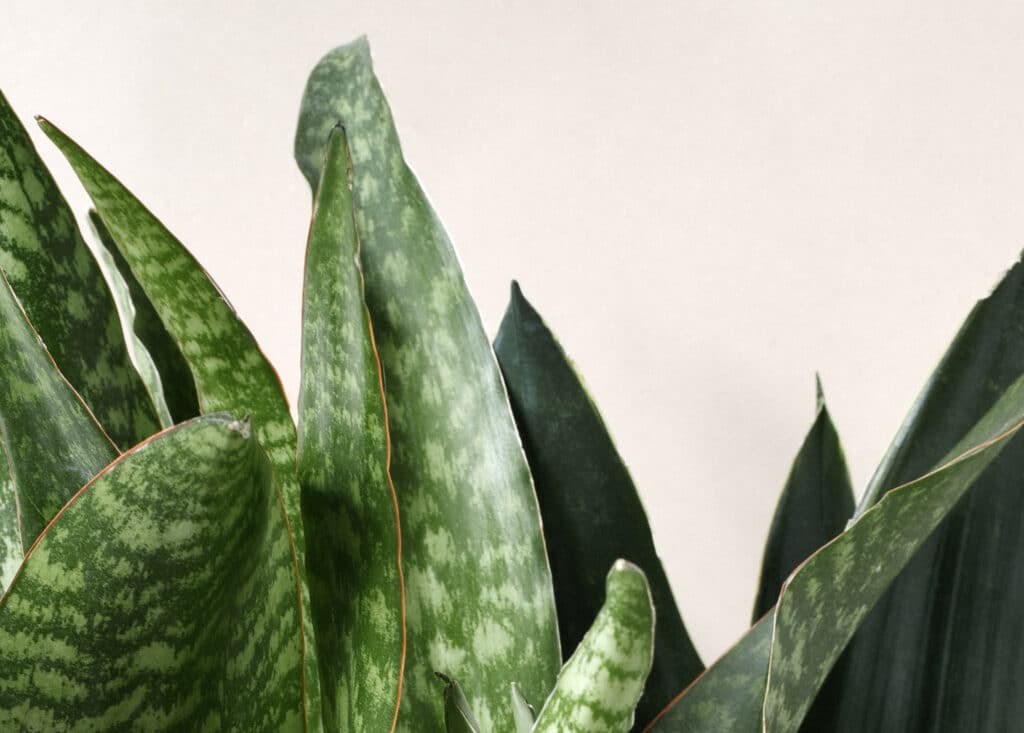
zPlant Care Tips part 2 – by Plant Circle
Sansevieria Care Tips
Sansevierias, commonly known as Snake Plants or Mother-in-Law’s Tongue, are some of the toughest and most versatile houseplants out there. With their upright, architectural leaves and forgiving nature, they’re ideal for beginners, offices, or anyone looking for low-maintenance greenery. Here's everything you need to know to help your Sansevieria thrive. Sansevieria Care Summary Light Dull sun or low light; tolerates a range of lighting conditions Watering Water sparingly; allow soil to fully dry between waterings Humidity Adaptable from low to high humidity environments Soil Fast-draining mix, such as cactus or succulent soil Toxicity Toxic to humans and pets if ingested Lighting Tips Sansevierias are famous for thriving in less-than-ideal lighting conditions. They tolerate low light better than most plants, but if you want to see new growth, place them in a spot with bright, indirect sunlight. A few hours of weak morning sun is okay, but avoid intense direct afternoon rays. Watering Advice This is where many people go wrong—Sansevieria hates soggy soil! Water only when the soil is completely dry. In the summer, that might mean every 2–3 weeks; in winter, even less. Their roots are prone to rot, so err on the side of neglect. Humidity Needs Snake Plants are not fussy about humidity. They can thrive in dry environments just as well as more humid rooms. Whether it's a steamy bathroom or an arid living room, they’ll adapt just fine. Best Soil Type Use a well-draining mix—cactus or succulent soil works perfectly. You can add perlite or coarse sand to your mix for even better drainage. Make sure your pot has a drainage hole. Growth and Maintenance Sansevierias are slow-growing, but over time, they’ll produce offsets (baby plants) that you can propagate. Remove dust occasionally from the leaves to keep them looking sharp. They rarely need repotting and even thrive slightly root-bound. Toxicity Notice Like many houseplants, Sansevieria is toxic if ingested by humans or animals. Keep it out of reach of curious pets and children. The sap can also cause mild skin irritation—wash hands after handling if you notice sensitivity. Why We Love It With its sword-like leaves, tough nature, and air-purifying qualities, Sansevieria is a staple in any plant collection. Whether you’re a seasoned collector or a new plant parent, it’s the ultimate zero-drama houseplant. 🌱 Ready to adopt a Sansevieria? Check out the varieties we have in stock now at Plant Circle and start your low-maintenance plant journey!
Read more
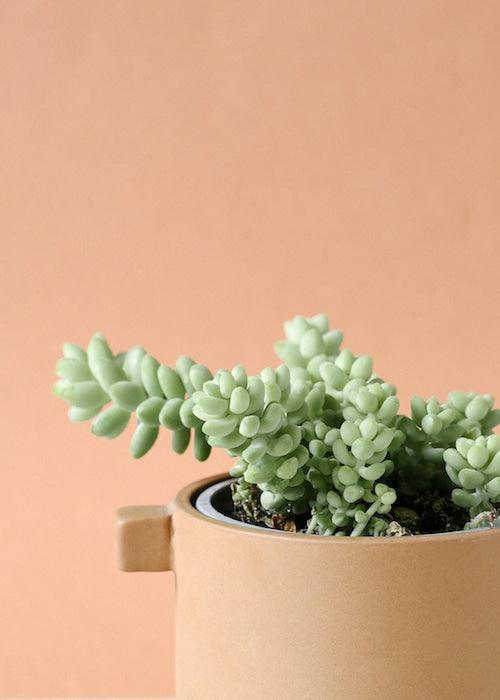
zPlant Care Tips part 2 – by Plant Circle
Sedum Care Tips
Light bright spot, can whit-stand a few hours of sunshine a day Water as opposed to most succulents, needs regular (possibly weekly) watering in summer and much less in winter but only when potting mix is dry to touch Soil fast draining potting mix such as cactus mix Humidity low Plant toxicity non-toxic to humans nor animals when ingested.
Read more
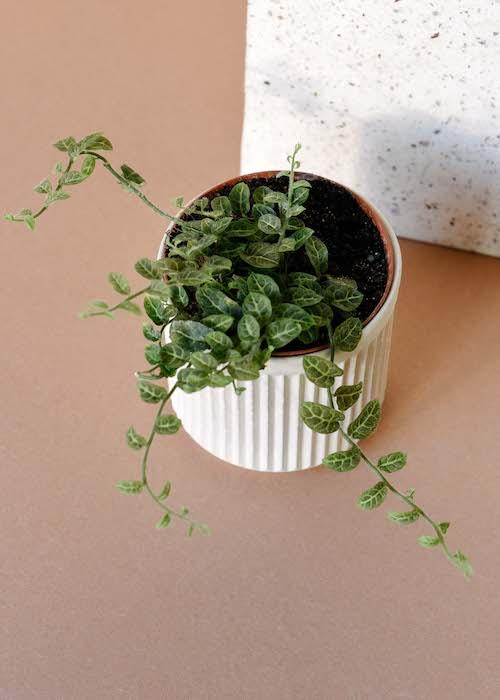
zPlant Care Tips part 2 – by Plant Circle
Marcgravia Care Tips
Light Marcgravia thrive in medium to bright light, but will produce more extraordinary foliage if it gets a lot of light. Water Marcgravia like to stay moist, but not wet at all times. They do not like water sitting on their leaves for long periods of time, so make sure to always water below the leaves. Humidity Marcgravia loves humidity, so it is a great plant for the humid environment of a container garden or terrarium. This plant is not recommended as a houseplant in an open air pot, since it needs at 70%+ humidity to thrive. Temperature Marcgravia likes warm temperatures between 22℃ and 28℃ Soil Very well-draining mix or sphagnum moss Toxicity Potentially toxic to pets and humans when ingested.
Read more
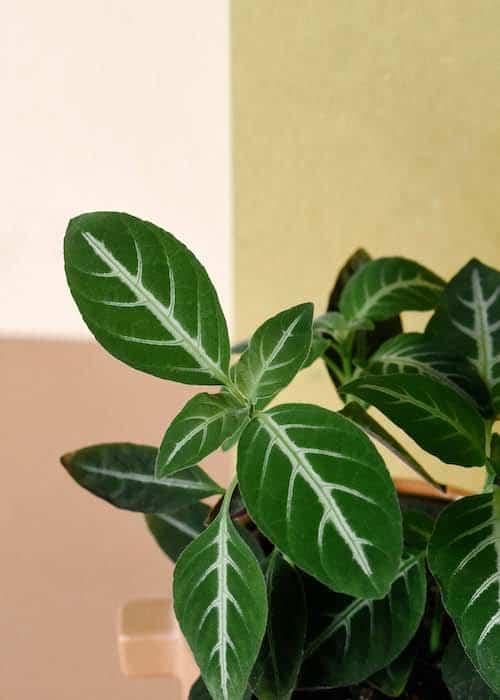
zPlant Care Tips part 2 – by Plant Circle
Ruellia Care Tips
LightPlenty of sunlight is also recommended for optimal growth, even during the colder months. Avoid direct sunlight because it could scorch your Ruellia's leaves.Waterwhen top 3cm of soil are dry, do not let it dry out completelyHumidityRuellia appreciates high humidity.TemperatureRuellia needs warm temperatures above 6 degrees Celsius, so can be grown outdoors during the growing season as long as the nights are not too cool.Soil Ruellia Makoyana grows best in regular potting soil with good drainage.ToxicitySome Ruellia used as medicinal plants, but many are known or suspected to be poisonous, so better be safe than sorry and do not let your pets nibble on your Ruellia!
Read more
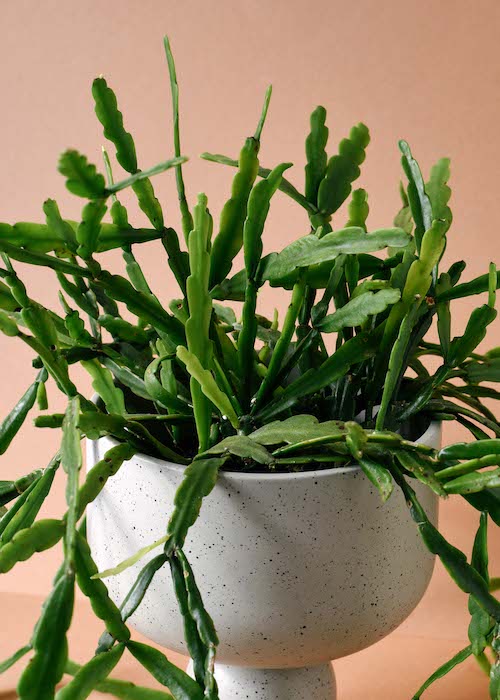
zPlant Care Tips part 2 – by Plant Circle
Rhipsalis Care Tips
Light bright spot, can whit-stand a few hours of sunshine a day Water As opposed to most succulents, needs regular (possibly weekly) watering in summer and much less in winter but only when potting mix is dry to touch. Soil fast draining potting mix such as cactus mix Humidity low Toxicity non-toxic to humans nor animals when ingested.
Read more
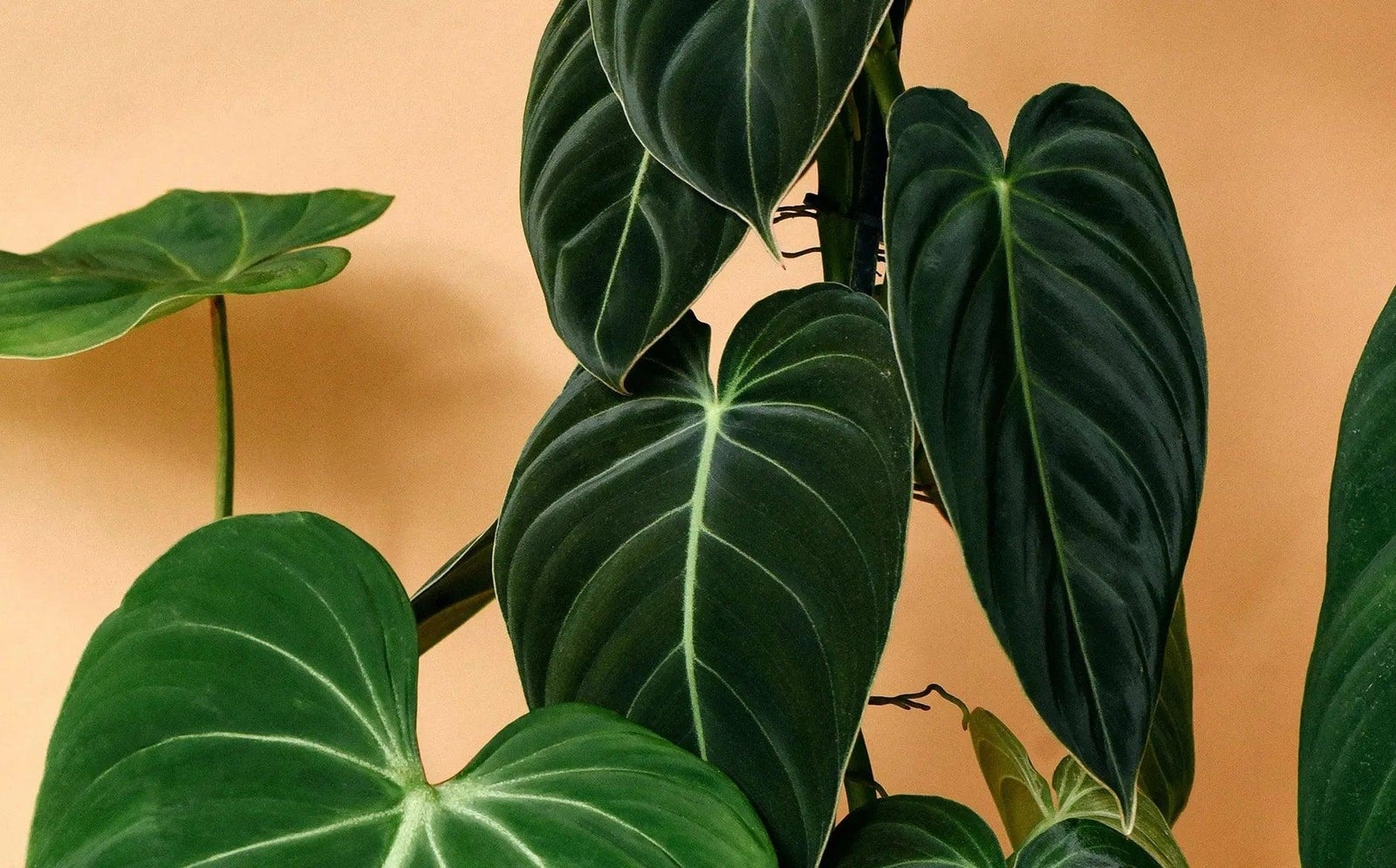
zPlant Care Tips part 2 – by Plant Circle
Dischidia Care Tips
Soil Lightweight, fast-draining potting mix Light bright indirect Humidity 40%-60% Repotting Dischidia like to be pot bound, they need to be repotted very seldom Toxicity Dischidia are NOT toxic to humans or animals when ingested.
Read more
zPlant Care Tips part 2 – by Plant Circle
Gesneriad Care Tips
Light Gesneriads do well right in front of windows that have plenty of bright but indirect light. They don’t like too much direct sun, so experiment and see what locations your plants do best in. You can also use sheer curtains to diffuse any windows that have too much direct sun. Water Gesneriads do not like to dry out completely, so make sure you water them regularly. Use rain or distilled water, not tap water, as these plants are sensitive to the chemicals in treated water (learn more about Hard Water). Gesneriads do not like their leaves to get wet, because they are covered in small, transparent hair, which makes them so soft. Since it is hard to water it from the top without wetting the delicate, bushy leaves, it is best to bottom-water your Gesneriad. Pour water into a saucer and let your Gesneriad sit in it for 20 minutes. Put your plant back into its spot afterwards, do not let it sit in water for too long. Also, refrain from misting. Humidity Gesneriads also like higher humidity but are very tolerant of average indoor conditions. Aiming for 50% humidity would be ideal. Soil Gesneriads appreciate a well-draining potting mix ideally containing some sand. They also love to be pot-bound, which helps the plant to bloom. Fertiliser Regularly fertilize your indoor gesneriads throughout the active growing season for best growth and flowering. Toxicity Good news! Gesneriads are not toxic to dogs, cats or people.
Read more
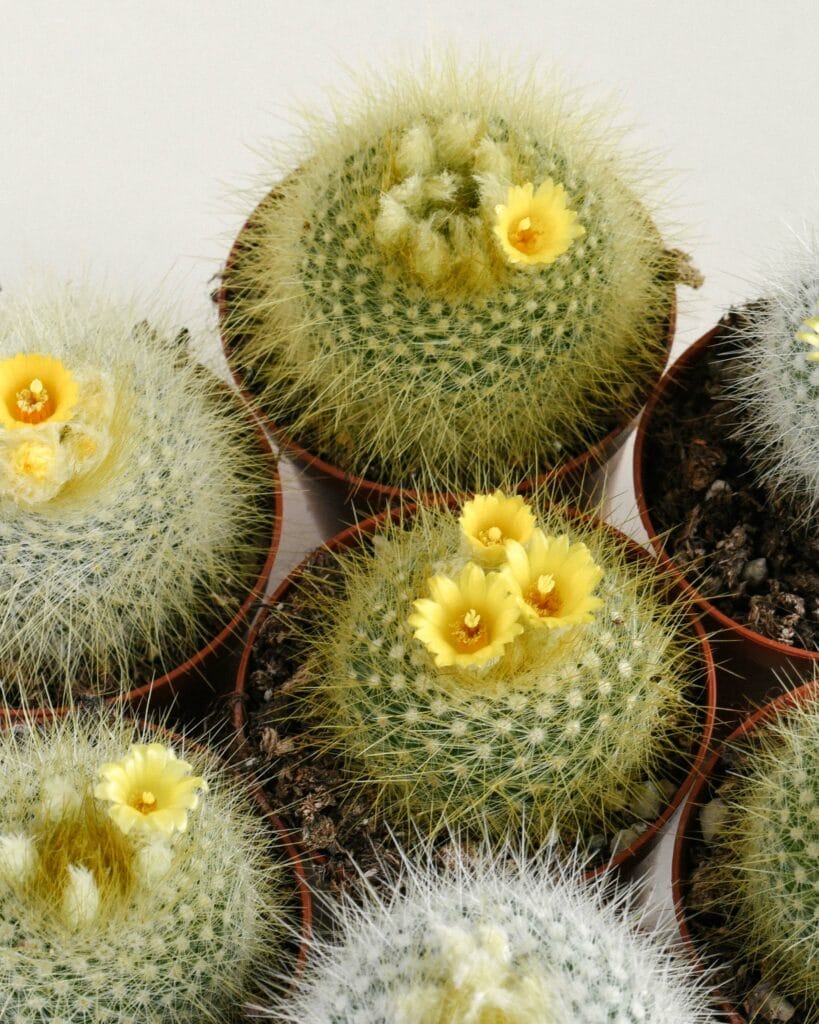
zPlant Care Tips part 2 – by Plant Circle
Cactus Care Tips
Light Strong light is essential for healthy cacti. Make sure to give them as much light as possible when growing it inside. If you want to bring your cactus outside during the warmer months, make sure to acclimate it to the stronger light step by step or it might scorch. Soil fast-draining cacti mix ideally containing sand Temperatures Desert cacti love warm temperatures during the summer and cooler temperatures in winter. You can grow your cactus outside during the growing season to give it that extra bit of sun and warmth, which will result in faster growth. However, make sure to bring it back inside before the first freezing nights or it might get frost damage. Water When your cactus is actively growing during the growing season, water whenever the soil is dry to the touch. Make sure to water thoroughly when you do. During the winter rest period, only water very rarely and if the plant begins to shrivel. The most common mistake with cacti is overwatering, which will cause rot either at the base of or its growing tips. Toxicity Not all cacti are toxic for humans and animals when ingested, but some are. Either way, make sure your pets do not get too close to them due to their prickly spines! Care is needed when handling cacti to prevent injuries.
Read more
zPlant Care Tips part 2 – by Plant Circle
Coleus Care Tips
Light bright indirect light indoors, partial shade outdoors Water keep the soil moist, but never soggy wet Humidity dry to average Soil Not very picky, but should be well-draining Toxicity This plant is toxic to animals: Coleus contain an essential oil toxic to cats and dogs, which can cause skin irritations and burns if not diagnosed and treated right away. It is only mildly toxic for humans, causing minor skin irritation from exposure to skin or from ingestion.
Read more
zPlant Care Tips part 2 – by Plant Circle
Impatiens Care Tips
Light Bright indirect light, partial shade Watering keep soil moist but not soggy wet Soil rich, well draining potting mix Propagation herbaceous stem cuttings Toxicity Good news, this plant is non-toxic to animals.
Read more
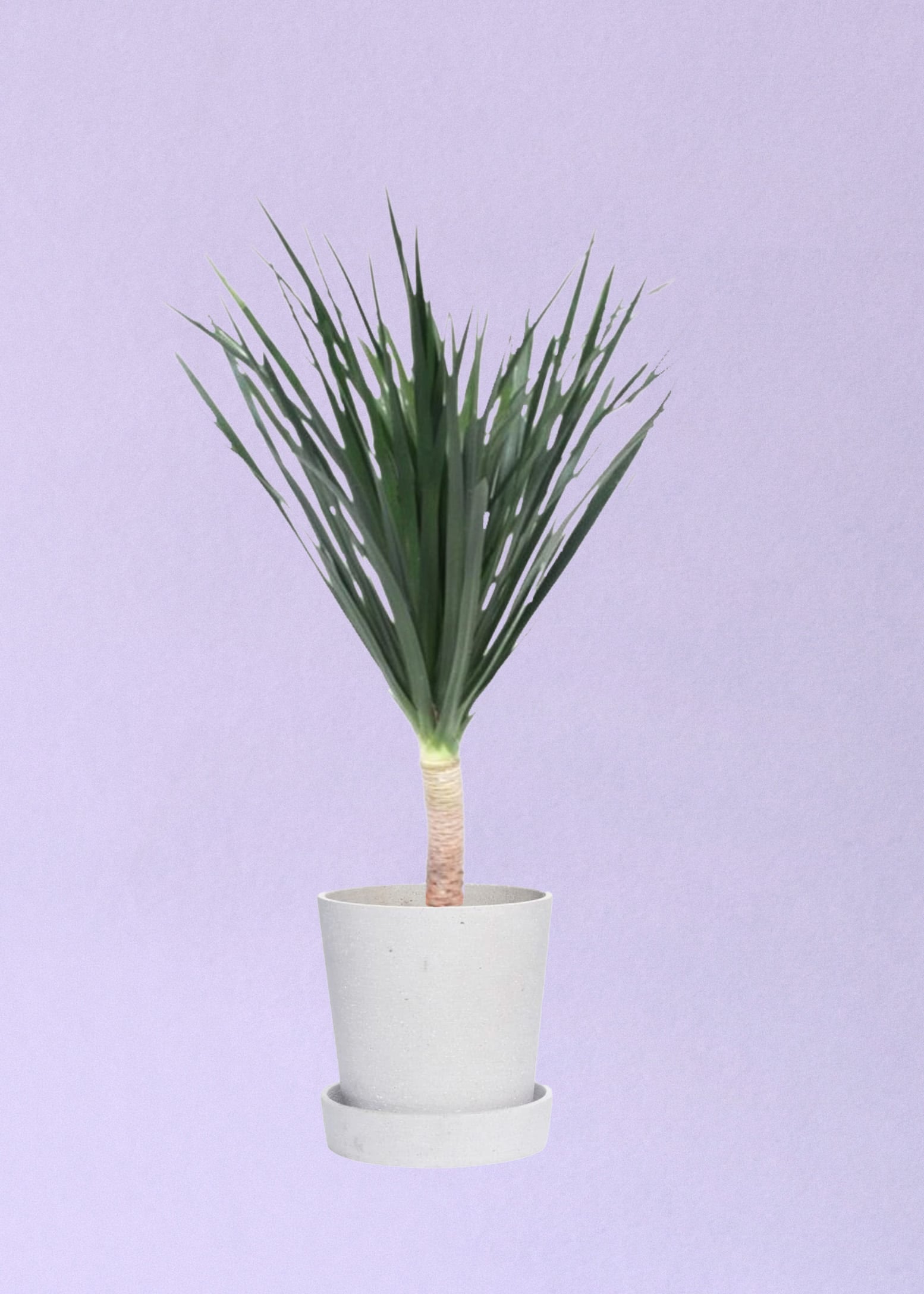
zPlant Care Tips part 2 – by Plant Circle
Dracaena Care Tips
Light Bright indirect light, protect from direct sunlight and drafts. Can tolerate low light but leaves loose their best colour in too much shade. Water Keep the soil moist during the growing season but never waterlogged. Reduce watering from fall to winter. Mist often and give it an occasional shower to remove dust. Humidity average Soil fast-draining, clayey potting mix with a mixture of peat, perlite and bark Toxicity This plant is toxic to animals if ingested.
Read more
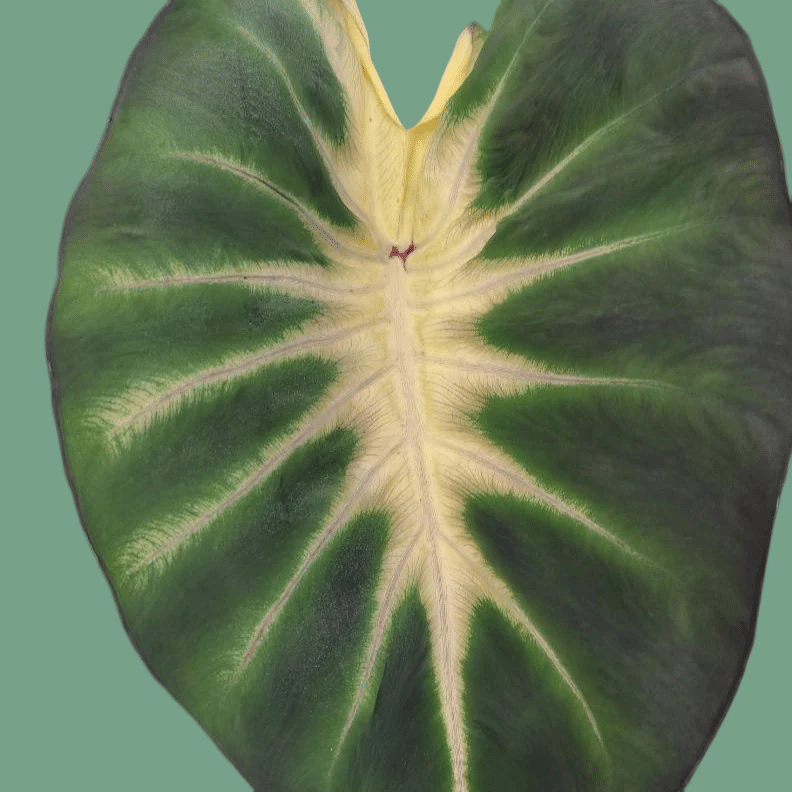
zPlant Care Tips part 2 – by Plant Circle
Colocasia Care Tips
Light Bright, sun to part shade Water keep moist Humidity above average Soil well-draining mix Toxicity This plant is toxic to humans and animals when ingested.
Read more
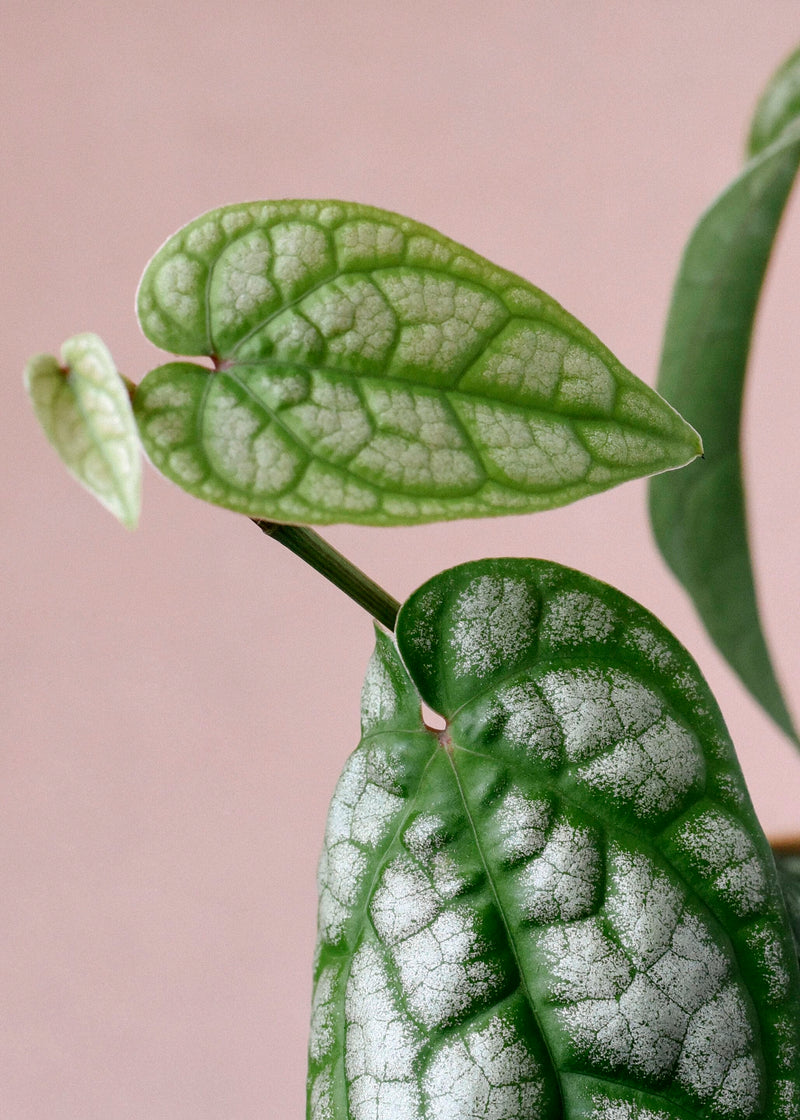
zPlant Care Tips part 2 – by Plant Circle
Piper Care Tips
Watering Water regularly, allowing the soil to halfway dry out before watering again. Light Would benefit from being in medium diffused light. Humidity They like moderate humidity but would tolerate a less humid environment. Soil well-draining potting mix, like our in-house mixed aroid mix (buy here) Toxicity This plant is toxic to humans and animals when ingested..
Read more
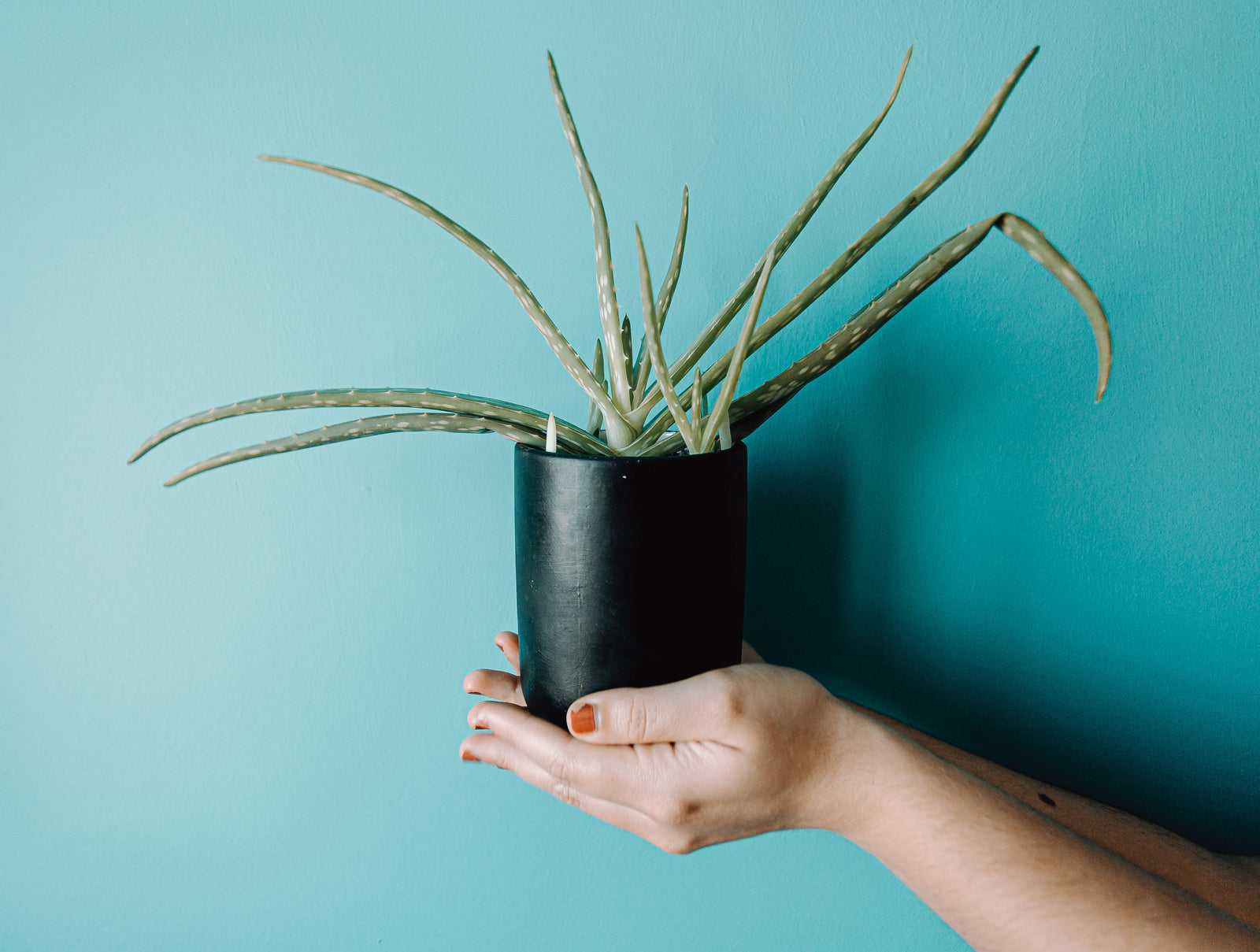
zPlant Care Tips part 2 – by Plant Circle
Aloe Care Tips
Light bright sun at best, but can tolerate low light Water sparingly, once per month in winter, once every week and a half in summer Soil fast draining potting mix like cactus mix containing sand Plant toxicity toxic for humans and animals when ingested.
Read more
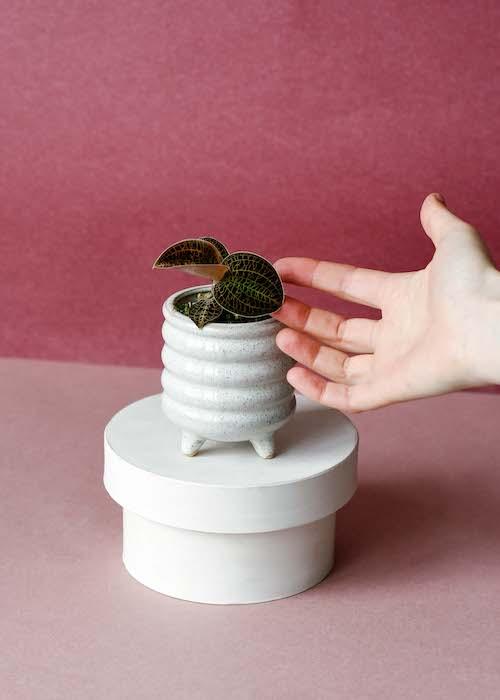
zPlant Care Tips part 2 – by Plant Circle
Jewel Orchid Care Tips
More detailed information here. Light medium light, part shade Water keep evenly moist throughout the year Potting wide and shallow container Soil Bark (20%) + Sphagnum Moss (50%) + Perlite (30%) Toxicity Great news, jewel orchids are NOT toxic to pets or humans.
Read more
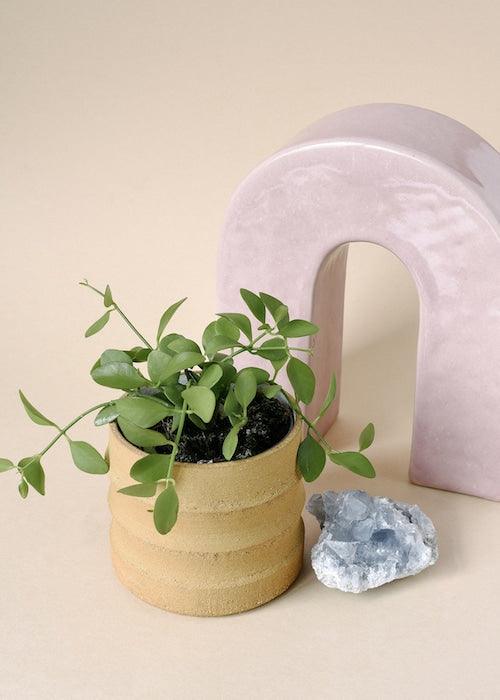
zPlant Care Tips part 2 – by Plant Circle
Dischidia Care Tips
Soil Lightweight, fast-draining potting mix Light bright indirect Humidity 40%-60% Repotting Dischidia like to be pot bound, they need to be repotted very seldom Toxicity Dischidia are NOT toxic to humans or animals when ingested.
Read more
zPlant Care Tips part 2 – by Plant Circle
Licuala Care Tips
Light Bright, indirect sunlight, part shade Water keep moist but not soggy wet Humidity high Soil well-drained but moist, rich organic mix soil. Plant toxicity This plant is highly toxic to humans and animals when ingested.
Read more
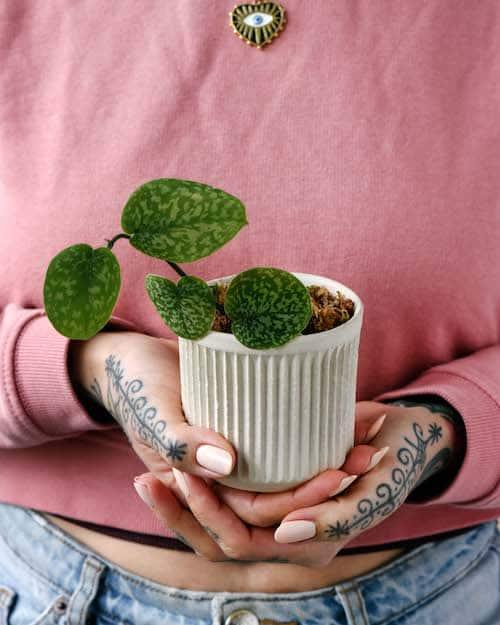
zPlant Care Tips part 2 – by Plant Circle
Scindapsus Care Tips
Light Scindapsus thrive best in medium to bright indirect light, but will tolerate much lower light conditions. However, be aware that loo little light might cause the leaves to lose their beautiful variegation. Do not expose your Scindapsus to direct light, which might scorch its leaves. Water Water thoroughly when the top half of the soil is dry to the touch. Scindapsus can tolerate underwatering, but are much less tolerant of overwatering, so make sure not to water it too much or it will wilt easily. Always remove excess water from the saucer to avoid the plant sitting in water. If the leaves of your Scindapsus start curling on both sides, you have underwatered your plant. Humidity Scindapsus are tropical plants, so they will appreciate high humidity and reward you with more growth. However, they make for such great houseplants because they do not require it to thrive. Moderate humidity of 40-50% is just fine for most Scindapsus. Temperature Scindapsus, being tropical plants, prefer temperatures of no lower than 18 and no higher than 28 degrees Celsius. Ideally, they should be grown in usual household temperatures. Soil Scindapsus love growing in a very well-draining, loose substrate, such as our Aroid Potting Mix, which was developed specifically for plants in the Aroid family. If you prefer mixing soil yourself, we recommend a mix of 1/3 bark, 1/3 perlite and 1/3 coco coir. Fertiliser During the growing season, feed your Scindapsus regularly with a liquid fertiliser suitable for houseplants. Do not fertilise your plant during the colder months unless you supplement with grow lights. Toxicity Scindapsus are toxic to pets and humans when ingested.
Read more
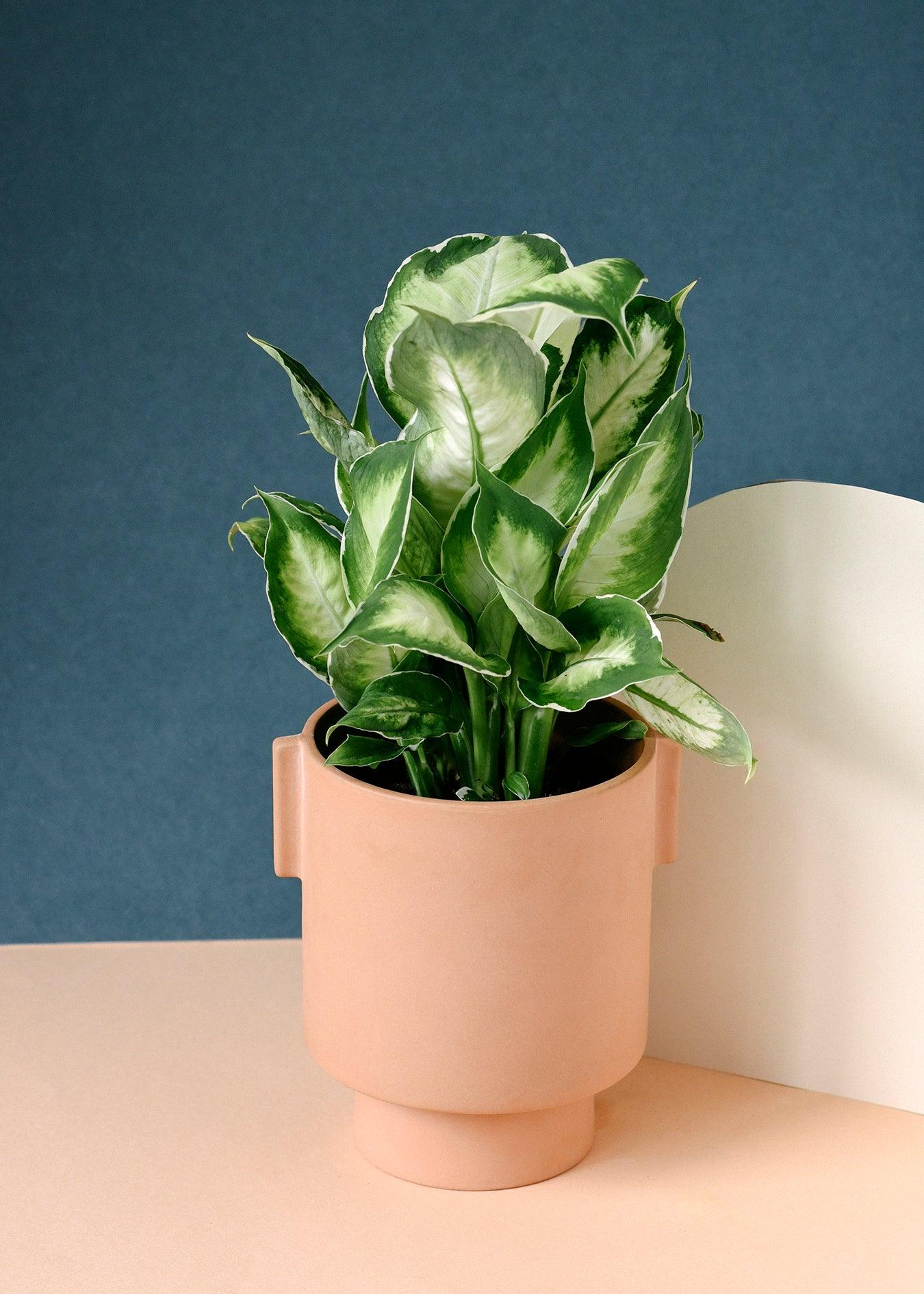
zPlant Care Tips part 2 – by Plant Circle
Dieffenbachia Care Tips
Light Bright, indirect sunlight, part shade Temperature Best around 23 degrees Celcius, avoid drafts from windows Water keep moist but not soggy wet Humidity average Soil 1:1 soil to perlite Toxicity This plant is highly toxic to humans and animals when ingested. You should wear gloves whenever cutting or pruning your Dieffenbachia, as its sap might cause skin irritations.
Read more
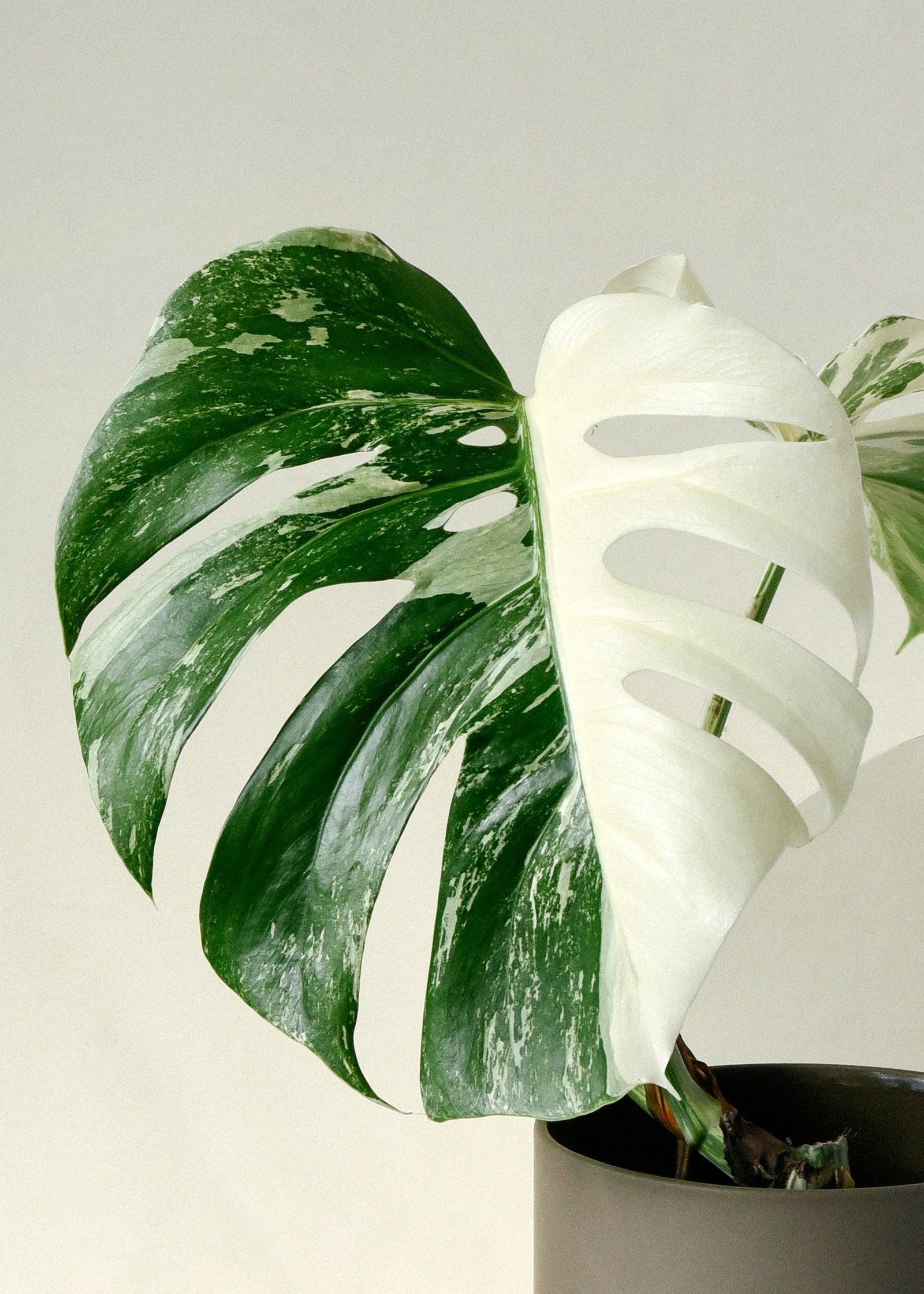
zPlant Care Tips part 2 – by Plant Circle
Monstera Care Tips
Light Monsteras thrive best in bright indirect light. It will tolerate much lower light conditions, but will grow much more slowly if at all. Do not expose your Monstera to direct light or you might risk crispy, burnt leaves. Water Monsteras like their soil to stay moist, but never wet. Water when the top half of the soil is dry to the touch. Most Monsteras will tolerate drying out if you miss a watering, but try not to overdo it or you might cause its roots to shrivel up and rot when watered again. When its leaves look droopy is when you should water your Monstera at the latest, but it is better not to let it get to that point all too often! Also, do not water your Monstera when the top half of the soil is still moist or you will risk root rot. Always remove excess water from the saucer to avoid the plant sitting in water. Humidity Monsteras are tropical plants and will appreciate high humidity. However, they make for such great houseplants because they do not require it to thrive. Moderate humidity 50% will work well for most Monsteras. Temperature Monsteras, being tropical plants, prefer temperatures of no lower than 15 and no higher than 30 degrees Celsius. Ideally, they should be grown in usual household temperatures. Soil Monsteras love growing in a very well-draining, loose substrate, such as our Aroid Potting Mix, which was developed specifically for plants in the Aroid family. If you prefer mixing soil yourself, we recommend a mix of 1/3 bark, 1/3 perlite and 1/3 coco coir. Toxicity Monsteras are toxic to pets and humans when ingested. Typically, ingestion will cause stomach irritation and potentially vomiting.
Read more
zPlant Care Tips part 2 – by Plant Circle
Sophora Care Tips
Position in a bright to full sun location with a moderate to high airflow, tip prune in spring to encourage branching. This plant can be grown outdoors. Soil Well draining potting mix Water Never allow the juvenile plant to dry out between watering, a mature plant will cope with more sporadic watering. Humidity medium Toxicity WARNING! Please note this plant is highly toxic if ingested.
Read more
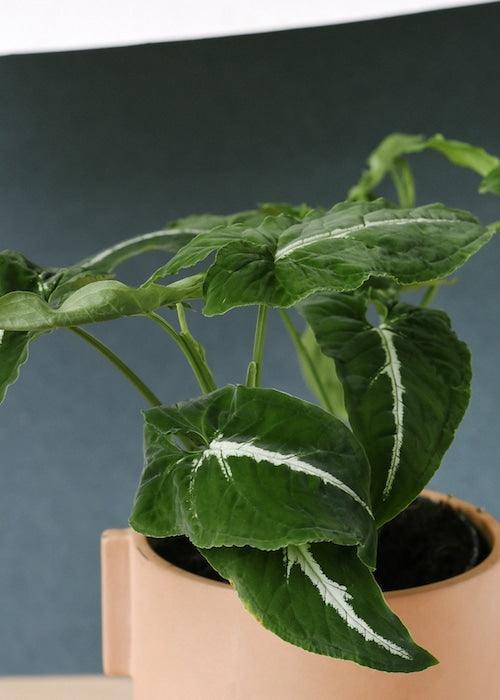
zPlant Care Tips part 2 – by Plant Circle
Syngonium Care Tips
Learn how to care for Syngonium houseplants with our expert-backed guide. From lighting needs to soil preferences, this care manual will help your Arrowhead Vine thrive year-round.
Read more
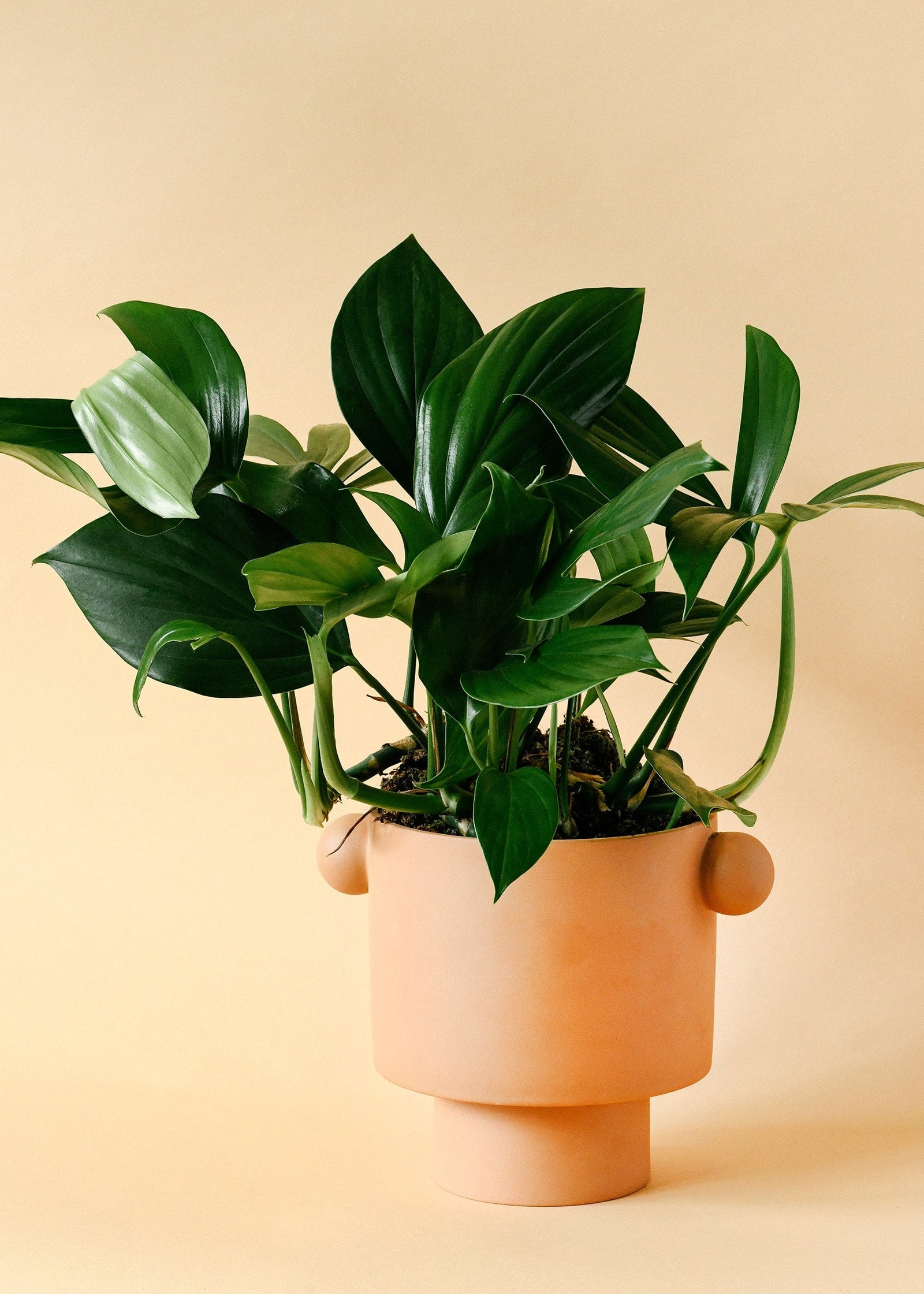
zPlant Care Tips part 2 – by Plant Circle
Rhaphidophora Care Tips
Light Bright indirect light Watering When the top 3cm of soil are dry to touch Soil Well-draining potting mix like our aroid mix Toxicity This plant is toxic to animals and humans when ingested
Read more
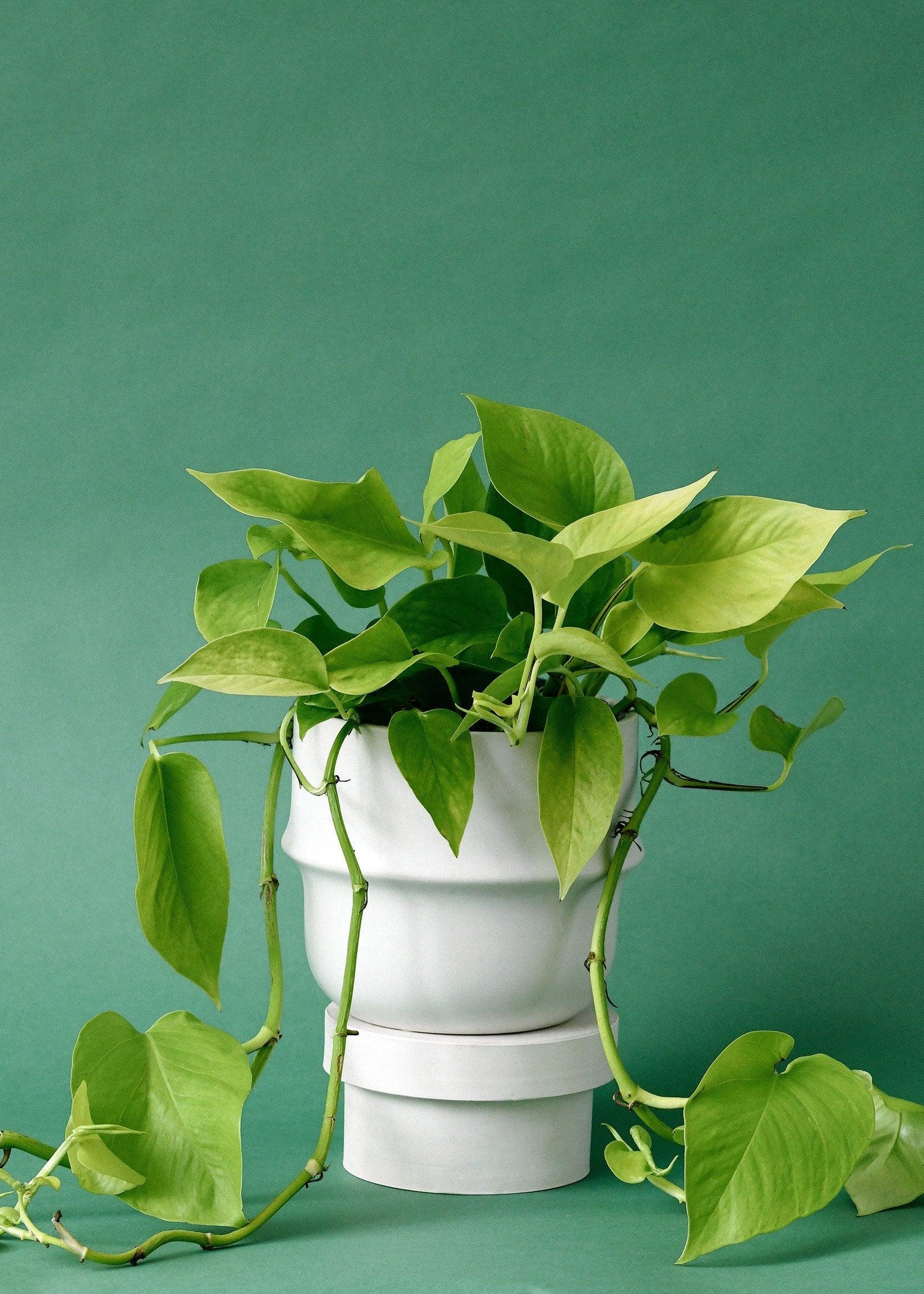
zPlant Care Tips part 2 – by Plant Circle
Epipremnum Care Tips
Light Bright indirect sunlight Soil well-draining potting mix like our aroid potting mix Water Water when top 3cm of soil is dry, let it dry out between watering Repotting Repot your Epipremnum when roots grow out of the pot. The ideal season for repotting is Spring. Toxicity Epipremnum are toxic to humans and animals when ingested.
Read more
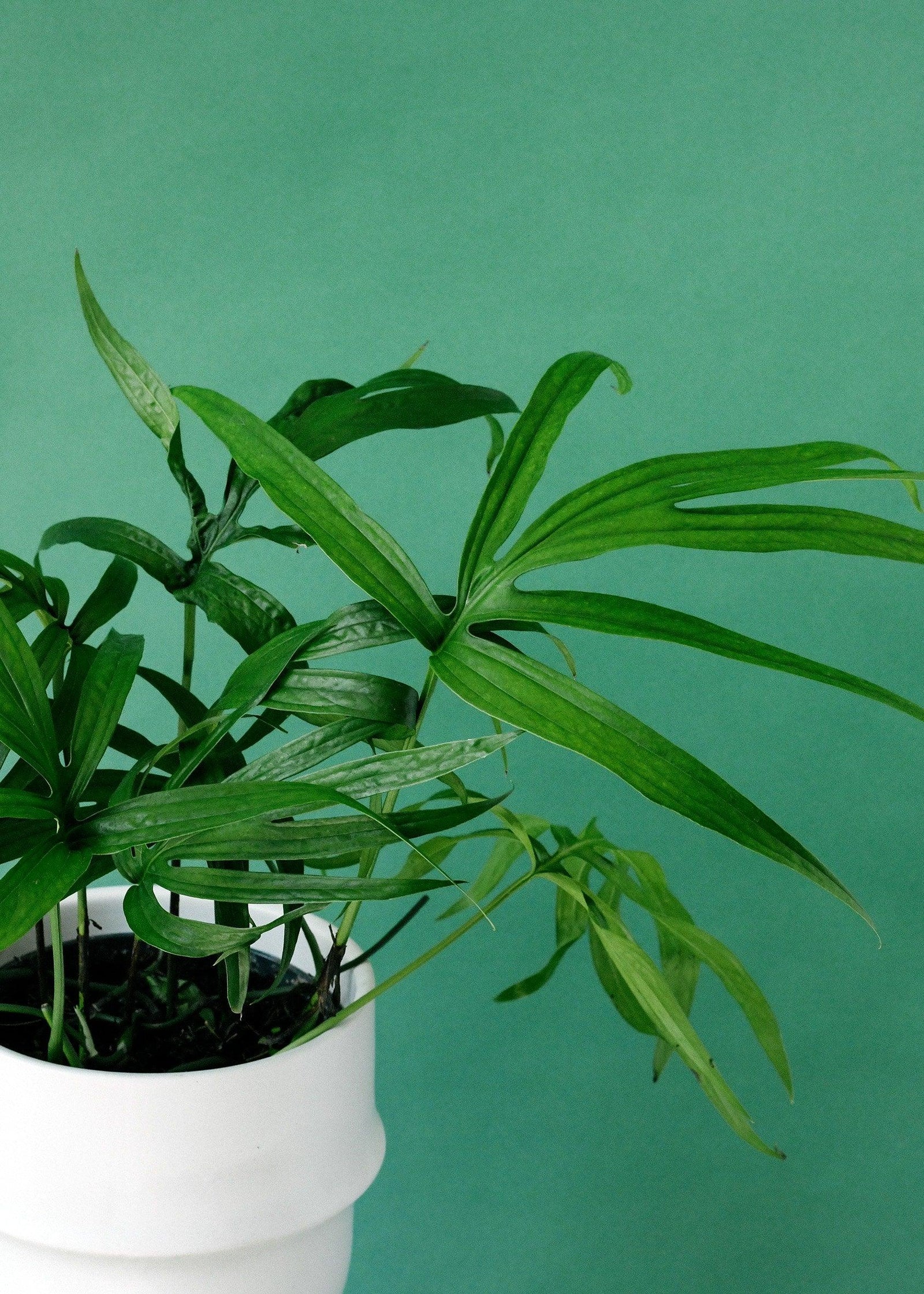
zPlant Care Tips part 2 – by Plant Circle
Amydrium Care Tips
Light Medium light but can tolerate low light. Avoid too much direct sun. Dappled sunlight is ideal. Can withstand 3 hours of direct sunlight. Water Once weekly. Allow potting mix to dry out before watering. Soil about 3,5cm down should be dry to touch. Water more frequently during warmer months and fertilise during growth season. Generally, the plant will droop to show that it needs more water. Do not overwater or keep the soil wet for too long, as this will encourage root rot. If leaves are yellowing due to overwatering, skip a week or two of watering. Humidity Normal to high Temperature 18°C-30°C. It’s best not to let it go below 15°C. Toxicity Toxic for humans and animals when ingested
Read more
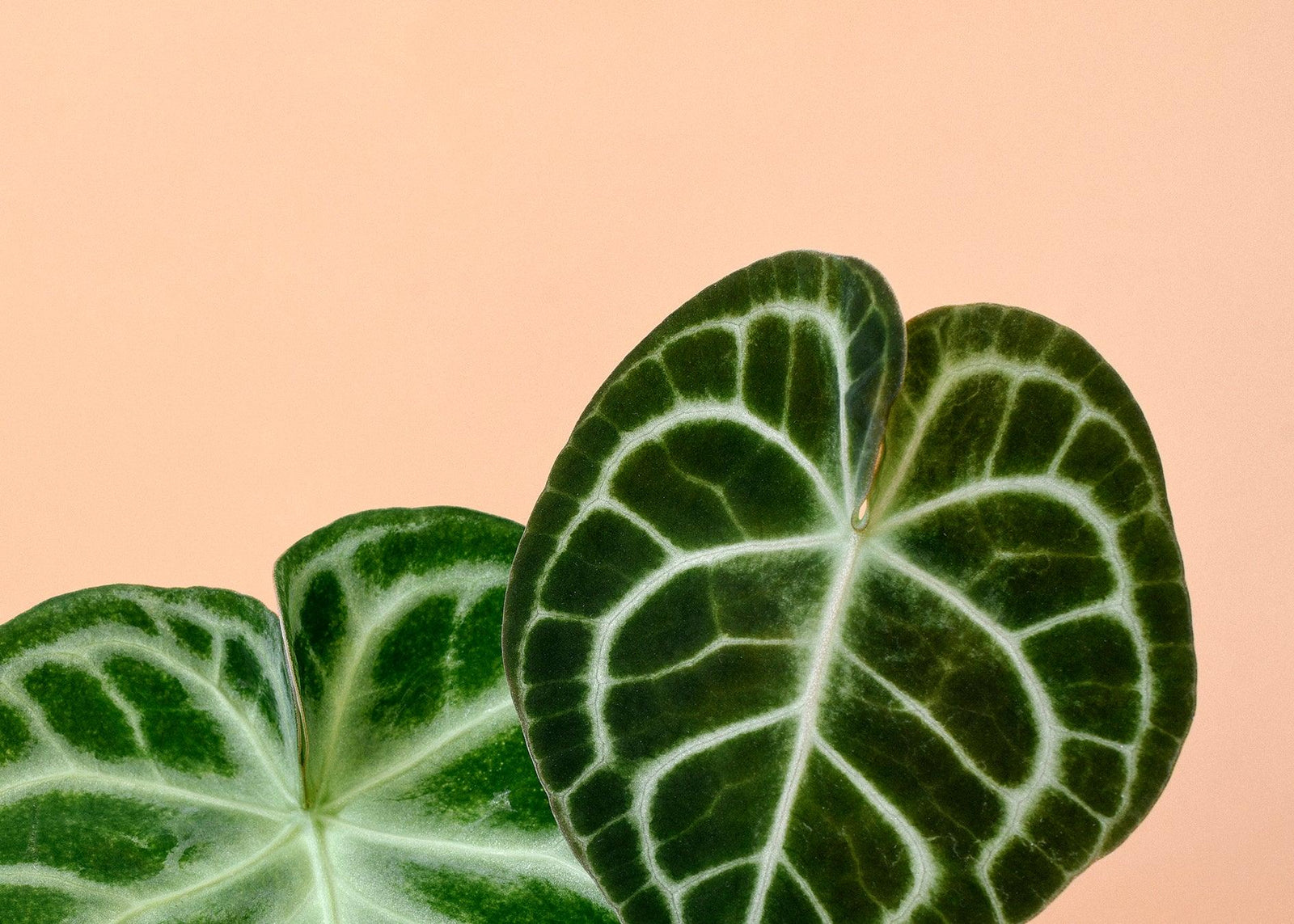
zPlant Care Tips part 2 – by Plant Circle
Anthurium Care Tips
Anthuriums bring tropical beauty indoors with their bold leaves and vibrant blooms. Learn how to care for them with our expert tips on light, watering, humidity, and propagation.
Read more
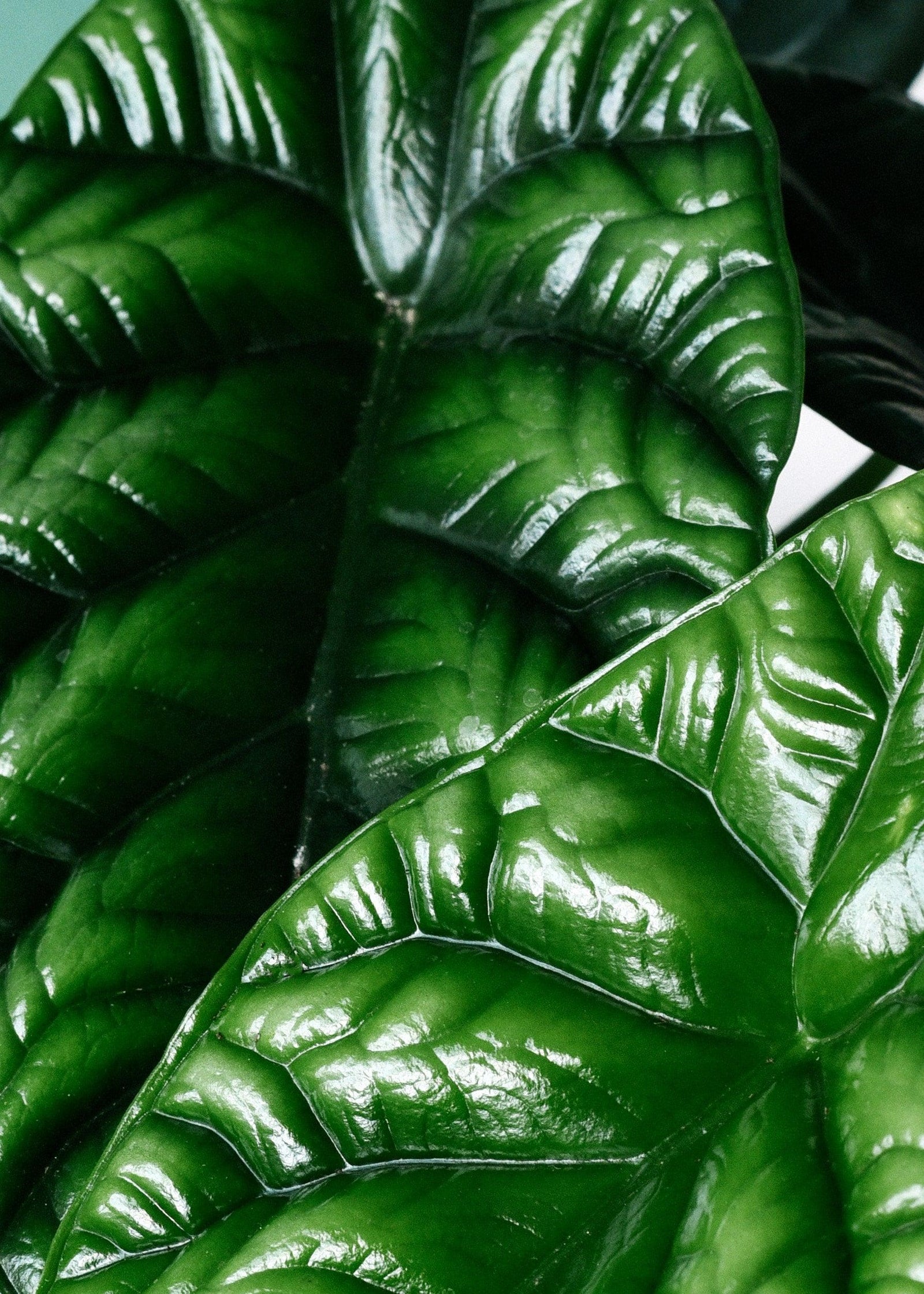
zPlant Care Tips part 2 – by Plant Circle
Alocasia Care Tips
Curious why your Alocasia keeps struggling? Our founder Monika shares her hard-earned tips for growing these tropical stunners indoors—hint: it’s all about airflow and the right mix.
Read more
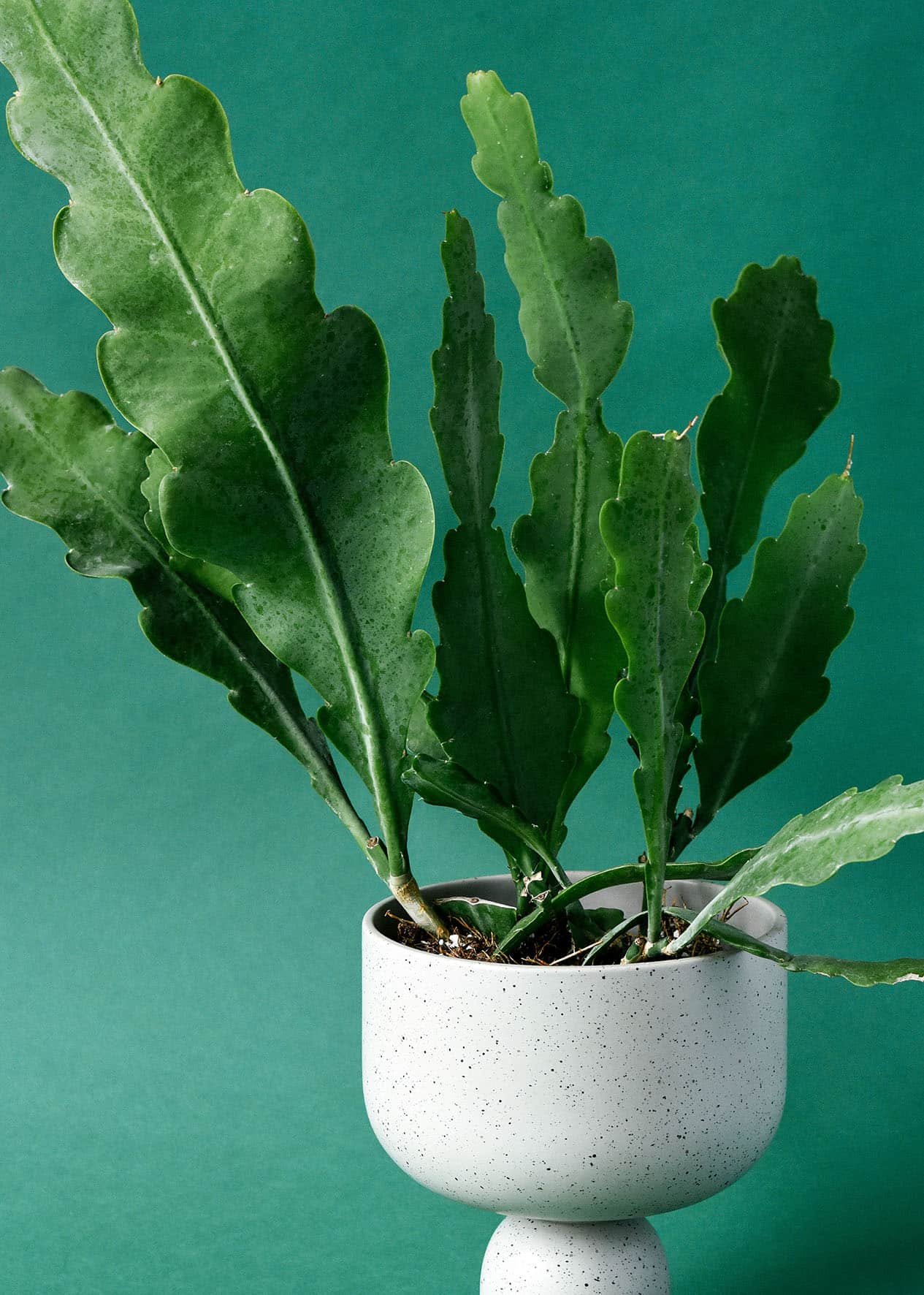
zPlant Care Tips part 2 – by Plant Circle
Epiphyllum Care Tips
When growing Epiphyllum make sure you keep it in the right potting mix. When mixing your own, start with 60% soil and 40% perlite. You can also add bark, peat or sand. Aim to repot it every 2 to 3 years. Light shade to partial shade, no direct sunlight Water let it dry out between waterings, drought tolerant Soil well draining cactus or orchid potting mix Toxicity Epiphyllum is not toxic to humans or animals.
Read more
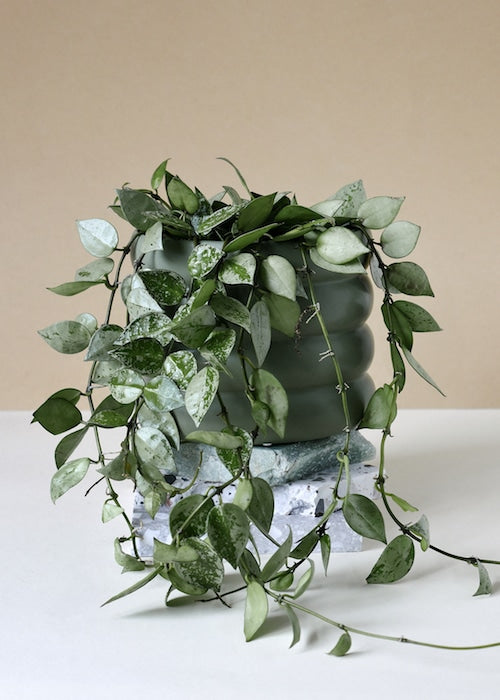
zPlant Care Tips part 2 – by Plant Circle
Hoya Care Tips
Hoya, often called Wax Plants, are resilient climbers with fragrant flowers and fleshy leaves. Learn the care essentials that help these beauties thrive and bloom indoors!
Read more
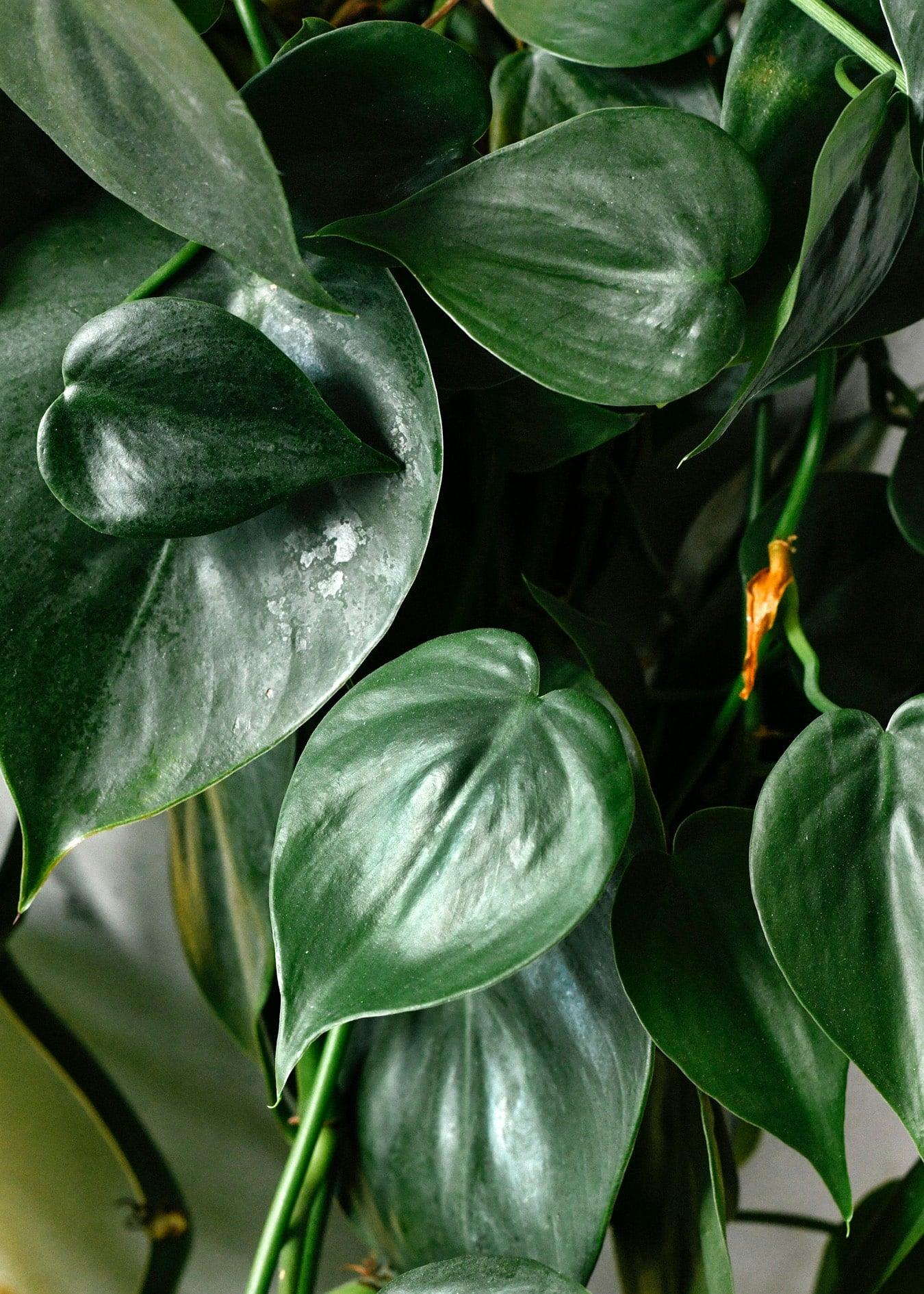
zPlant Care Tips part 2 – by Plant Circle
Philodendron Care Tips
Light Philodendrons thrive in medium to bright indirect light, but will tolerate darker spots as well. Soil Use a well-draining potting mix, such as our Aroid Potting Mix, ideally containing some coco coir, bark and perlite. You can also grow Philodendrons in soil-less mixes like sphagnum moss and perlite or hydroponics. Water Philodendrons like their soil to dry between waterings. Water when the top 3cm of soil are totally dry to the touch. Humidity Most Philodendron, especially the Erubesecens varieties, will thrive in average humidity. However, some of the more tropical and velvety species will require higher humidity to survive. Toxicity All Philodendron are toxic to humans and animals if ingested.
Read more
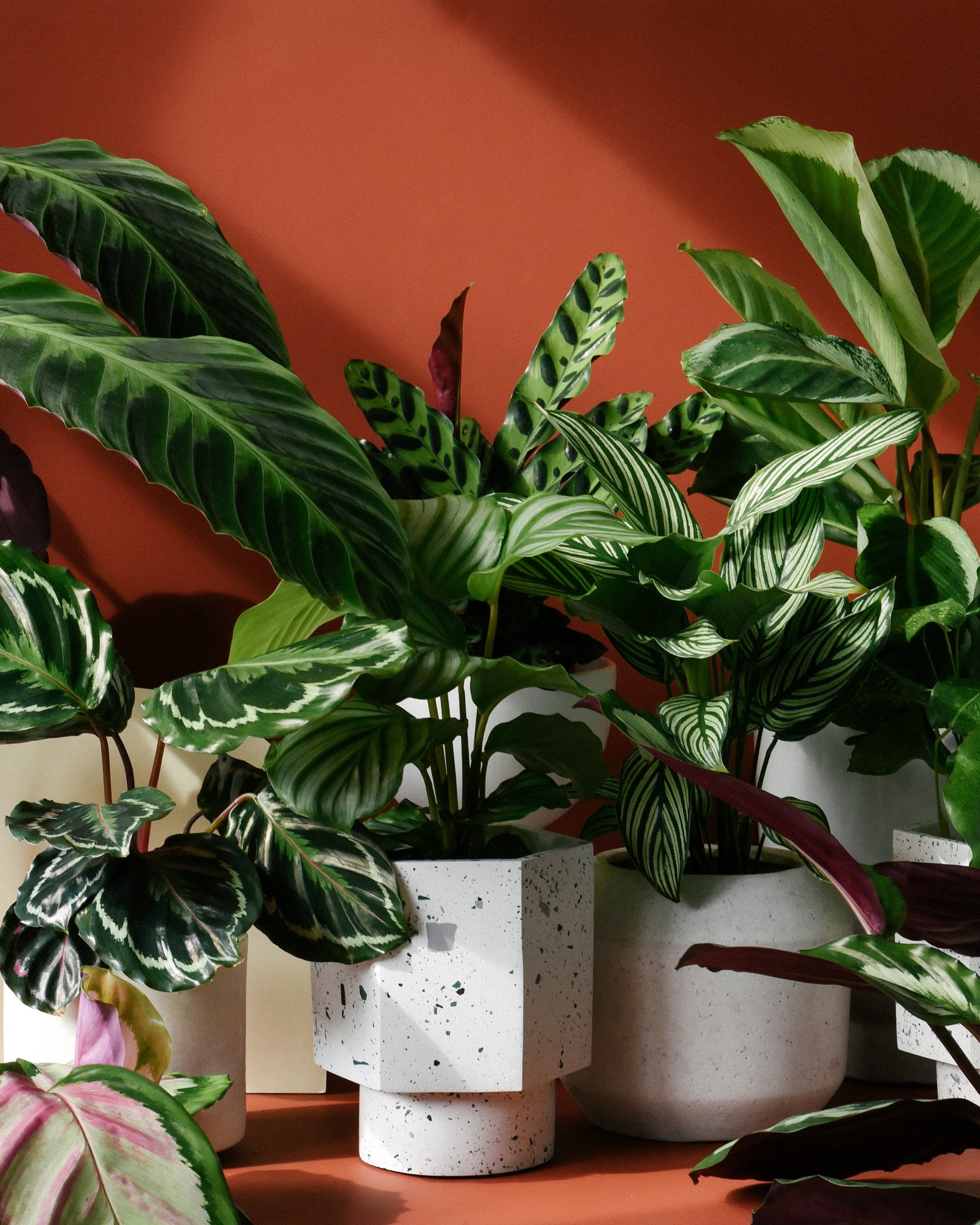
zPlant Care Tips part 2 – by Plant Circle
Marantaceae (Calathea and Mranta) Care Tips
Humidity These plants do need quite a lot of care, and especially a relatively high humidity to stay beautiful in our home, which is why some indoor gardeners do not dare caring for them. At least 60 percent in winter and 70 to 80 percent during the growing season from March to September are ideal conditions for Calathea. If the humidity in your home is too low, some Calatheas will quickly get brown and dry leaf margins. Also, the risk of them getting spider mites increases with lower humidity and, believe us, Calathea are unfortunately proper spider mite magnets! Some Calatheas, especially those in the ‘beginner’ category of the list on our blog, retain their beautiful leaves despite drier conditions. Watering Calatheas like to be kept moist, but not wet – they don’t like to dry out too much. When they are thirsty, Calatheas show it with curled-up and droopy leaves. That’s when you should give them a good soak at the latest, and they will be back to their former stunning selves within a day. Important: Calatheas will not tolerate your regular old tap water! Highly sensitive to hard water, these babies require water that is room temperature and soft, so think distilled water, or at the very least well filtered! Soil Despite their well earned diva reputation, prayer plants are actually not too picky when it comes to soil. They prefer a relatively well-draining, lightweight potting mix, but not as loose as you would use for your aroids, for example. A mixture of 50% coco coir, 30% perlite and 20% bark would work, or you can add about a quarter of sphagnum moss to three quarters of your go-to aroid mix to make it a bit more moisture retentive. Light In their native countries, Calatheas grow as hanging and climbing plants, or ground covers in the rather shady undergrowth of the rainforest. That’s why Calatheas don’t like too much light at home either; their ideal conditions would be a warm, draught-free, semi-shaded location without direct sunlight. Depending on their pattern, however, certain Calatheas, such as the White Fusion, need more light.If left too bright, Calatheas like to lower their leaves steeply, and that’s the great thing about this plant species; they may be divas, but they clearly communicate their needs! Pests As mentioned above, spider mites are a Calathea lover’s worst nightmare! These annoying bugs love prayer plants, so it is important to check the underside of their leaves very frequently for white spots that could prove to bespidermite eggs. There are a lot of ways to get rid of them. Our favourite is a solution of Neem oil, water and organic soap (with a teaspoon of pure alcohol if you want to go the extra mile) with which you can gently clean all your Calatheas leaves from both sides and its stems. Dormancy Although Calatheas are not known to go dormant, but they do go through phases of growth and demise, which means that they will sometimes start to drop a majority of their leaves. It is a shocking process, but you must not give up on your Calathea then! In a lot of cases, it will come back with a lot of new leaves once it goes into its growth phase again. As long as the rhizomes in the soil are healthy, all you need is patience. Propagation Calatheas cannot be propagated through cuttings, unfortunately. The only way to multiply a Calathea is by division, meaning you can simply divide the leaves of one plant including its rhizomes and roots into two and plant them up again. Easy as that! Toxicity Calatheas are not poisonous, which means they are pet friendly and not toxic to either cats or dogs, so this is the perfect genus for the patient plant and animal lover!
Read more
Be the first to know about newly stocked plants and accessories, sales and exclusive offers.